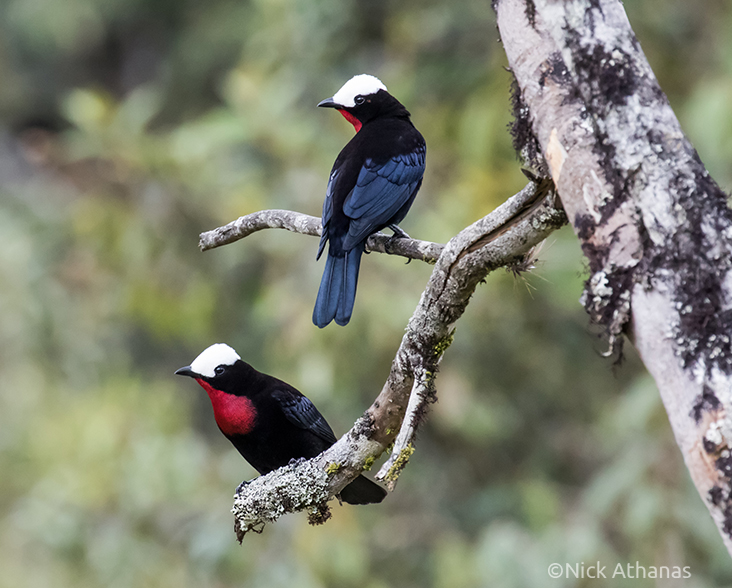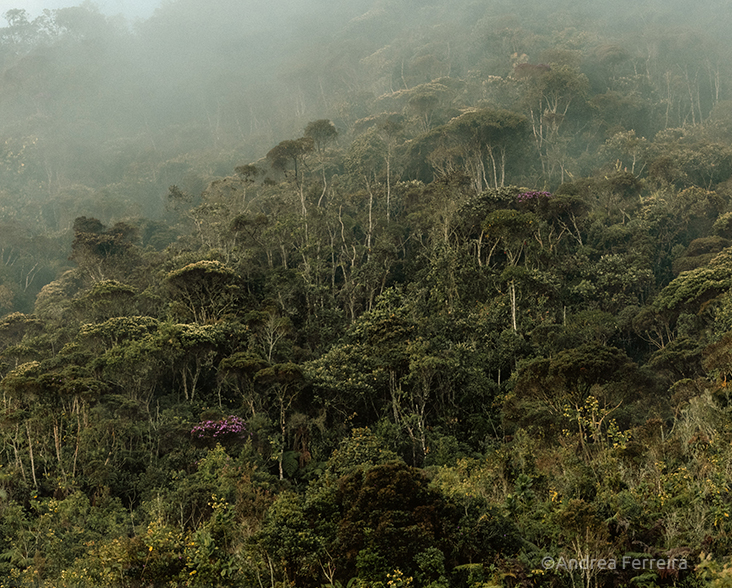White-capped Tanager
Species Data
Class: Aves
Order: Passeriformes
Family: Passerellidae
Scientific Name: Sericossypha albocristata
IUCN Red List status: Vulnerable
Description
At 24 cm in length and weighing 95-125 g, this is a large, heavy and unmistakable tanager. Males are glossy blue-black with iridescent bluish wings and tail, a bright white crown and lores, and a crimson throat and chest. The iris is dark brown, the small stout bill is black, and the legs are dark grey. The sexes are similar, but females have a darker red throat and chest, and immatures are matt black with a white crown and lack any crimson on the throat and chest.
Calls range from a loud “peeeeaap” to shrieking “keep” and “peeeur” notes.
Behaviour
Uncommon and patchily distributed throughout its range, the White-capped Tanager is usually found in wide-ranging noisy groups of 4-8 individuals, sometimes up to 20, occasionally associating with Turquoise Jays and caciques. Flocks of this species usually include just a single adult male, suggesting these are family groups.
The White-capped Tanager is omnivorous, with groups foraging in the tree canopy or in the tops of bushes, feeding on fruit pulp, Cecropia fruits, seeds, ants, bees, beetles, and fly and paper wasp larvae.
Breeding is known to occur in January. The nest consists of a large, loosely woven cup of rootlets and long pale fibres, lined with finer material and well hidden by fern fronds in the crown of tall tree ferns directly over the trunk. Cooperative breeders, three to four adult birds will forage together, each visiting the nest separately to feed the nestlings.
This species may make seasonal movements In some parts of its range.


Habitat
Found in the eastern Andes of Colombia and Ecuador, south to central Peru and north into south-west Venezuela, the White-capped Tanager inhabits humid and wet montane forest, mostly between 1,900-2,700 m, but up to 3,200 in Colombia.
Threats and Conservation
The population of this species is unknown but expected to decline by around 30% over three generations (11 years) due to deforestation and fragmentation of the montane forest upon which this species is reliant due to the expansion of agriculture and ranching. The White-capped Tanager depends on large intact areas of forest for foraging and is, therefore, listed as Vulnerable on the IUCN Red List.
Created in 1990 by WLT partner Fundación Guanacas Bosques de Niebla, the Guanacas Reserve protects 520 ha (1,285 acres) of cloud forest and naturally regenerating pasture in the Andes of north-western Columbia.
WLT is supporting a project by partner Fundación Guanacas Bosques de Niebla to expand the Guanacas Reserve and safeguard montane forest vital to the long-term survival of the White-capped Tanager.
